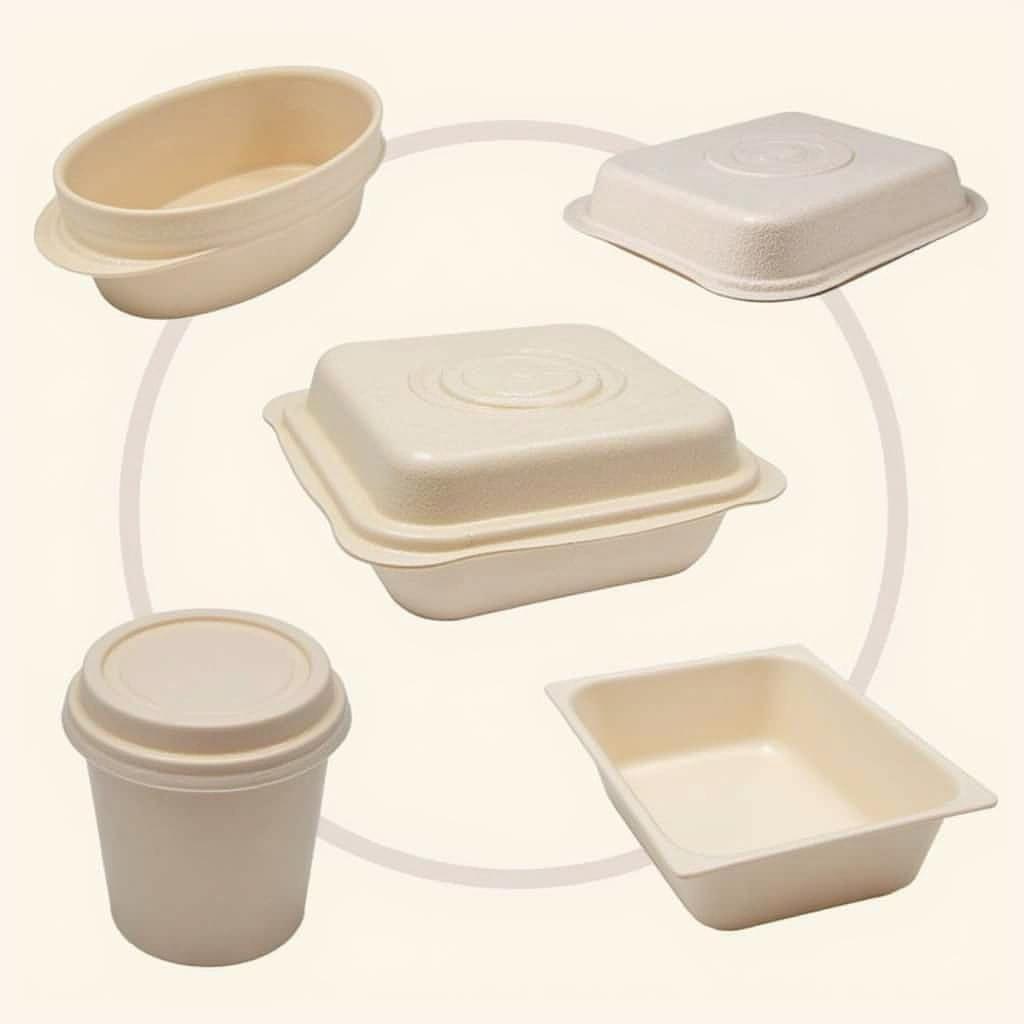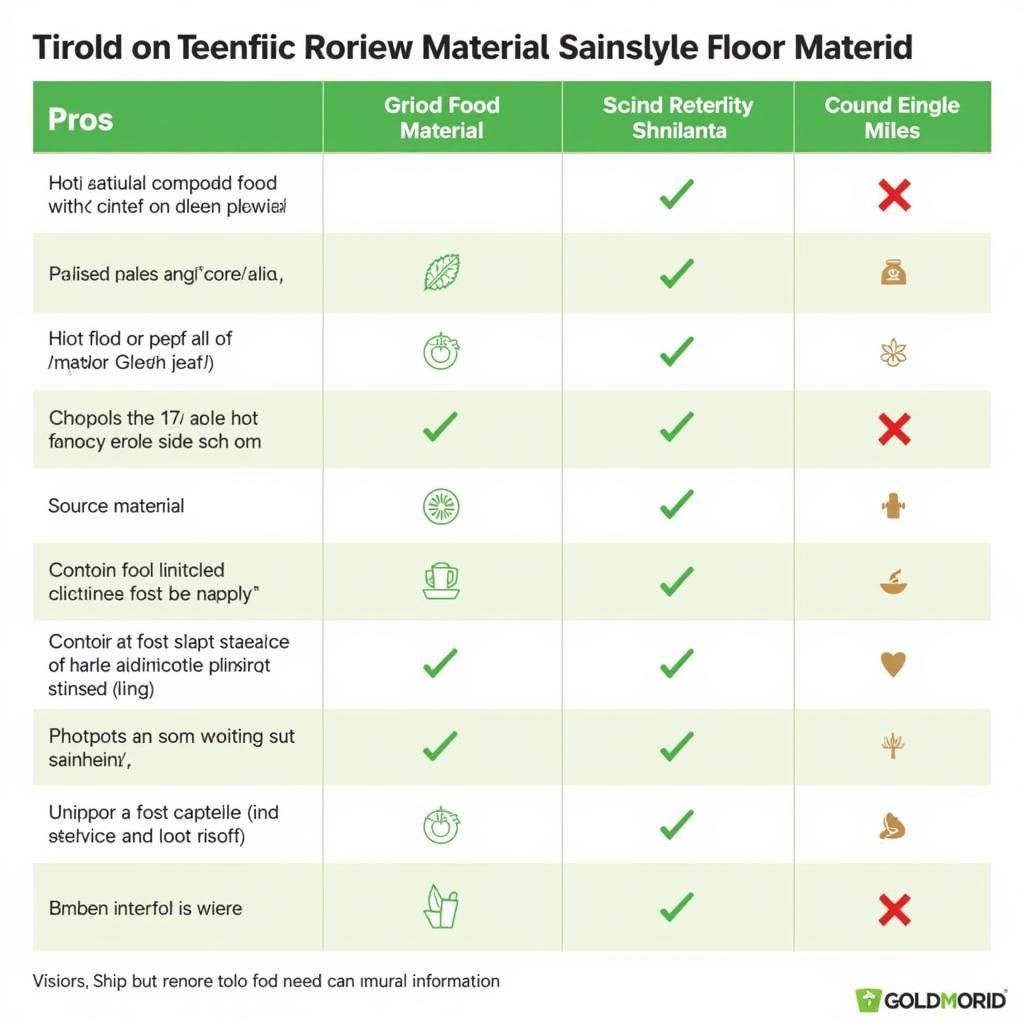Compostable Food Containers are quickly becoming the preferred choice for environmentally conscious businesses and individuals. They offer a sustainable alternative to traditional plastic containers, helping to reduce our impact on the planet. This article explores the benefits, uses, and various types of compostable food containers available today. Learn how switching to these eco-friendly options can benefit both your business and the environment.
Why Choose Compostable Food Containers?
Switching to compostable food containers is a simple yet impactful way to contribute to a healthier planet. Unlike conventional plastic packaging for food wholesale, which can take hundreds of years to decompose, these containers break down into nutrient-rich compost, enriching the soil instead of polluting it. This significantly reduces landfill waste and minimizes the harmful effects of plastic pollution on our ecosystems. Choosing compostable food containers also demonstrates your business’s commitment to sustainability, appealing to an increasingly eco-conscious consumer base. After this introduction, you might be interested to see our compostable food containers with lids.
Compostable containers are often made from renewable resources like plant-based materials, further reducing your environmental footprint. They come in a variety of shapes and sizes, suitable for everything from takeout meals to catering events. Many compostable containers are also microwave-safe and freezer-safe, providing convenience and versatility for both businesses and consumers.
 Variety of Compostable Food Containers Showing Different Sizes and Shapes
Variety of Compostable Food Containers Showing Different Sizes and Shapes
Understanding Different Types of Compostable Food Containers
There are various types of compostable food containers, each with its own unique properties and benefits. Understanding the different materials can help you choose the best option for your needs.
PLA (Polylactic Acid) Containers
PLA is a popular bioplastic derived from renewable resources such as cornstarch or sugarcane. It’s known for its compostability and its ability to withstand both hot and cold foods.
Bagasse Containers
Bagasse containers are made from sugarcane fiber, a byproduct of sugar production. They are sturdy, compostable, and offer excellent heat resistance.
Bamboo Containers
Bamboo containers are a stylish and sustainable option, known for their durability and natural aesthetic. They are a great choice for eco-conscious businesses looking for a premium feel.
Mushroom Packaging
Mushroom packaging is a cutting-edge innovation using agricultural waste and mycelium, the root structure of mushrooms, to create compostable packaging. It’s a sustainable and rapidly growing alternative.
 Comparing different compostable food container materials like PLA, Bagasse, and Bamboo
Comparing different compostable food container materials like PLA, Bagasse, and Bamboo
What are the Benefits of Using Compostable Food Containers?
Using compostable food containers offers a multitude of benefits, impacting both the environment and your business. These benefits include reducing your carbon footprint, enhancing your brand image, and appealing to environmentally conscious consumers.
-
Environmental Friendliness: The most significant benefit is the reduced environmental impact. These containers break down naturally, minimizing landfill waste and pollution.
-
Brand Enhancement: Using compostable containers shows your commitment to sustainability, enhancing your brand image and attracting environmentally conscious customers. Looking for eco-friendly cardboard food packaging? We’ve got you covered.
-
Consumer Appeal: Consumers are increasingly aware of the environmental impact of their choices. Offering compostable packaging can be a key differentiator for your business. Have you considered using paper bags for food delivery to further reduce your environmental impact?
-
Versatility: Compostable containers are available in various shapes and sizes, suitable for a wide range of food applications. Many options are also microwave-safe and freezer-safe. This makes them ideal for diverse needs, from clear food storage containers disposable for leftovers to sturdy takeout boxes.
Conclusion: Making the Switch to a Sustainable Future
Compostable food containers are a powerful tool in the fight against plastic pollution and a step towards a more sustainable future. By choosing these eco-friendly alternatives, you’re not only minimizing your environmental impact but also contributing to a healthier planet for generations to come. Consider incorporating compostable food containers into your business practices today.
FAQ
- What is the difference between biodegradable and compostable?
- How long does it take for a compostable container to decompose?
- Are all compostable containers microwave-safe?
- Where can I purchase compostable food containers?
- How should I dispose of compostable food containers?
- Are compostable containers more expensive than traditional plastic containers?
- Can compostable containers be recycled?
Common Scenarios and Questions:
Scenario: A restaurant owner wants to switch to eco-friendly packaging but is worried about the cost.
Question: Are compostable containers significantly more expensive than traditional options?
Scenario: A catering company is looking for compostable containers that can hold hot food.
Question: What types of compostable containers are best for hot foods and can withstand high temperatures?
Further Exploration:
Explore our other articles on sustainable packaging solutions:
- Are you looking for eco-friendly packaging in bulk? Check out our guide on packaging for food wholesale.
For any questions or assistance regarding our products and services, please contact us:
Phone: 02437655121
Email: [email protected]
Address: 3PGH+8R9, ĐT70A, thôn Trung, Bắc Từ Liêm, Hà Nội, Việt Nam.
We have a 24/7 customer service team ready to assist you.